Designing The Motion Picture’s Cargo- and Shuttlebay
The landing- or shuttlebay occupies Decks 16 and 17 in the aft section of the refit Enterprise. Underneath the landing bay, Andrew Probert facilitated a hangar, located on Deck 18. An elevating section leads into a cargo storage facility, which, three decks high, spans Decks 17, 18 and 19 and almost the entire width of the engineering hull. Escape pods are mounted into the sides of the hull and a port-side airlock provides access into the cargo bay, as shown in Star Trek: The Motion Picture, when Kirk boards the ship this way.
Let’s not put a window there
“Thoughts on the new Enterprise cargo decks [had] already [been] visualized by Star Trek veteran Mike Minor,” according to Probert.
The thinking, then at Paramount under Production Designer Harold Michelson, was that the cargo bay would be a space 30 feet high that had two walls with twelve holes containing cargo pods.
Michelson had wanted to “open up” one end of the area, “so we would be able to look out toward Earth,” even if there wasn’t a corresponding opening or window on the Enterprise model (and it would have made little sense to provide for one).
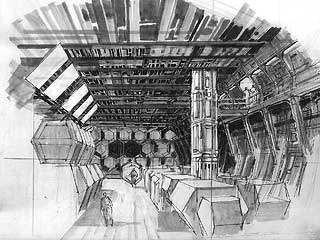
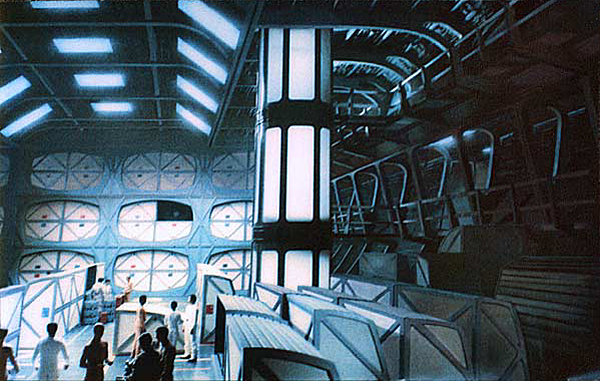
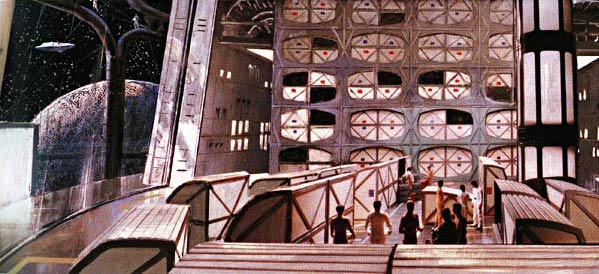
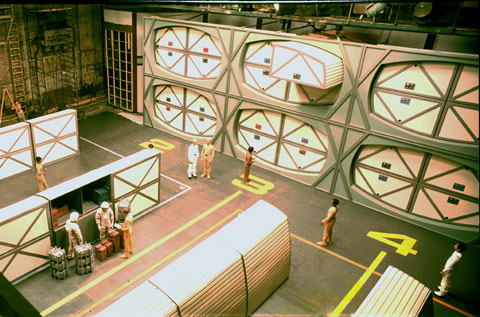
The designers “gave the excuse that there wasn’t any large opening on the ship where you could get that view,” Michelson told Fantastic Films in 1980 (My Star Trek Scrapbook has the full interview.)
It’s been done before and it wasn’t like I was saying something revolutionary, but they always shot the idea down.
Michelson accused Robert Abel and company, who were initially responsible for the film’s visual efforts, of “working from the model backward” and lamented,
They followed that model religiously and would not allow for any changes.
An impression that was produced by Mike Minor, without the huge window, reveals additional cargo pods simply stacked or lined up on the deck, leaving a huge open and unused space above. The walkways along the sides looked rather old-fashioned.
Probert comes in
The cargo bay scene would be part live-action and part matte painting.
Matte paintings are begun by filming a plate; a shot of live-action scene in which elements, too expensive to build, are needed. What Andrew Probert needed to do was get a frame of plate film and have it printed at a predetermined size.
“Part of this frame,” he explained, “required for the live-action element to be cut out and pasted to a piece of illustration board.” The remaining blank board, intended to be the matte, would then be painted around that piece, blending the two together.
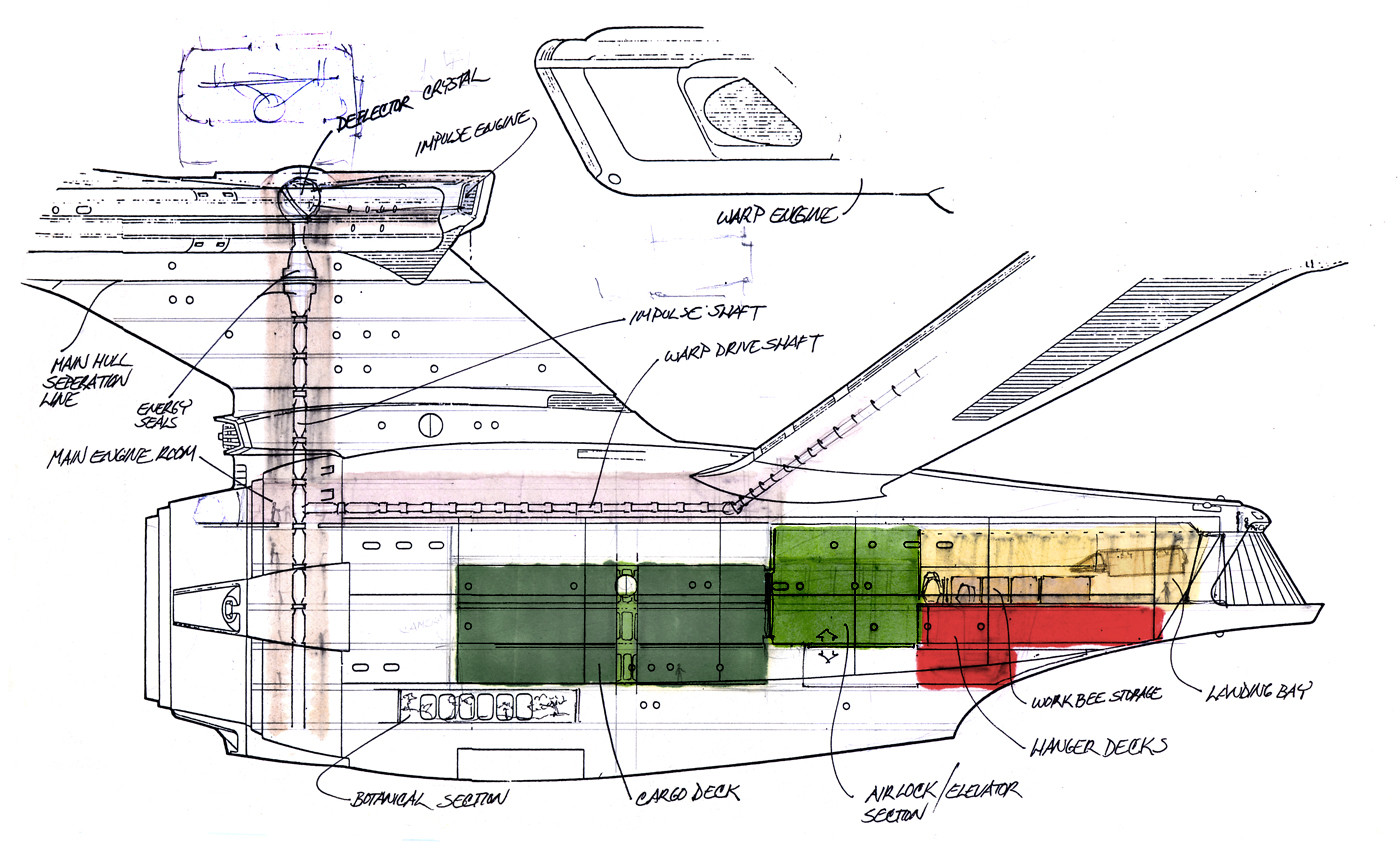
Following a discussion with Douglas Trumbull — who had by then taken over visual effects from Robert Abel and Associates — about how the cargo pods would get in and out of the deck, Probert produced an elevation sketch of the Enterprise engineering section. He presented the sketch to Trumbull as a solution to the problem and Trumbull approved.
This apparently convinced Michelson, who told Fantastic Films that Trumbull had “opened up a whole side of the ship” for him — referring, it seems, to the shuttlebay in the back.
The next step was for Probert to get some plate footage and start his matte renderings. “A matte rendering is simply a painting that illustrates what the final scene might look like,” he explained.
Once that image is approved by the director and producers, it is sent to the Matte Department, so that a “matte painter” can paint the actual “working” matte.
That would be Matthew Yuricich, who also painted the mattes for the air tram scene in San Francisco and the backdrop to Spock’s scene on Vulcan.
What Probert proposed was that the landing and cargo bays were connected, allowing the easy passage of cargo trains. “The landing bay doors remain open, but atmospheric integrity is maintained with a force field.”
The idea is that shuttles would normally take off from and land in the landing bay. They then could be lowered (E-1 or E-2) to the hanger bay level (which you see lighted in red), or lowered another level to shuttle maintenance. A multi-paneled two-storey door, between the elevators and cargo bay, has been opened to the sides allowing the transfer of cargo.
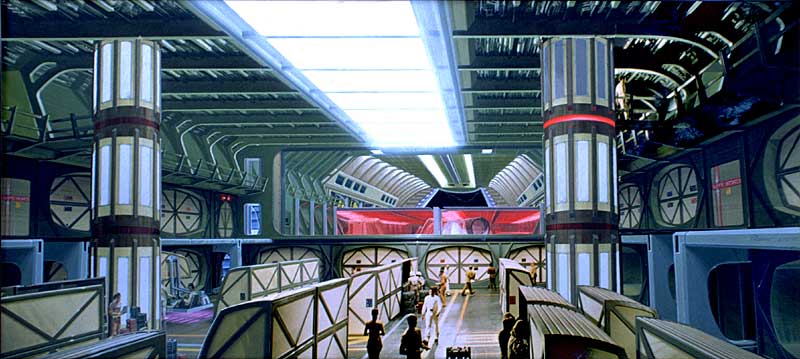
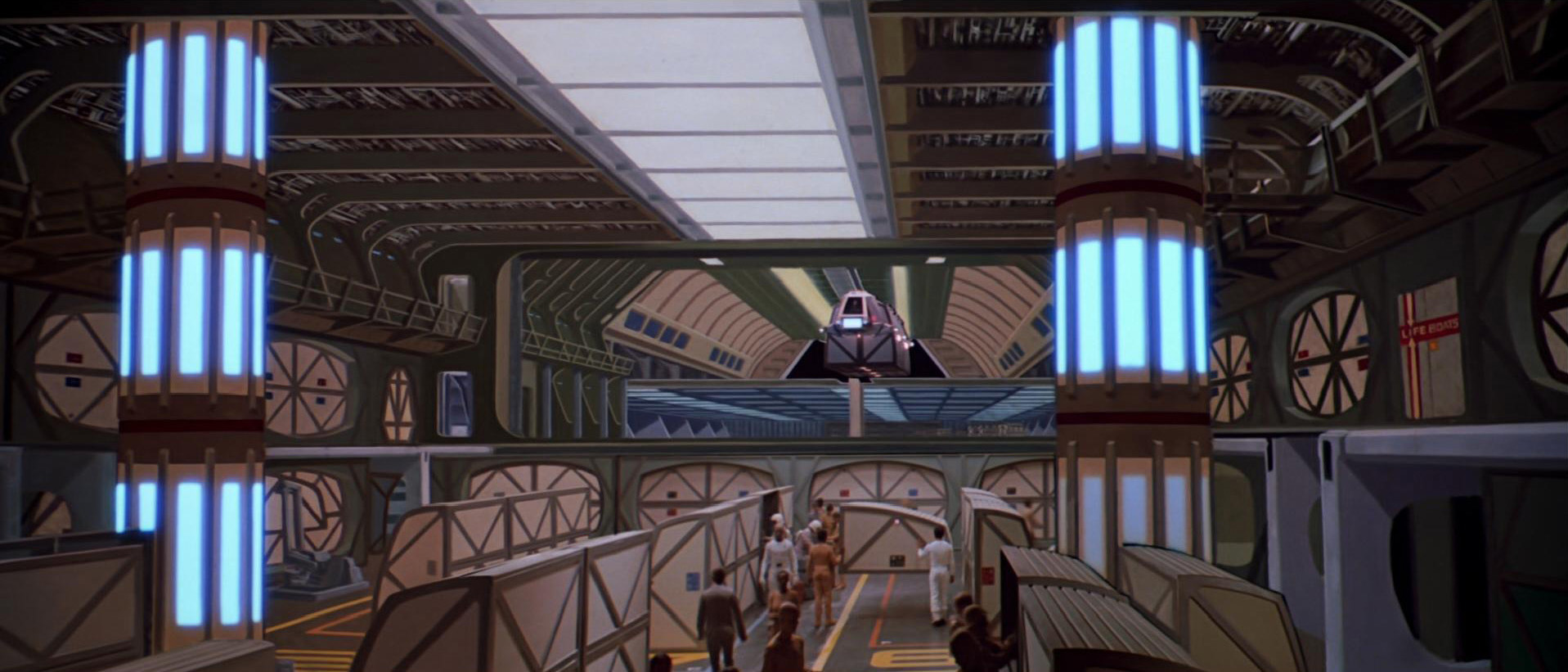

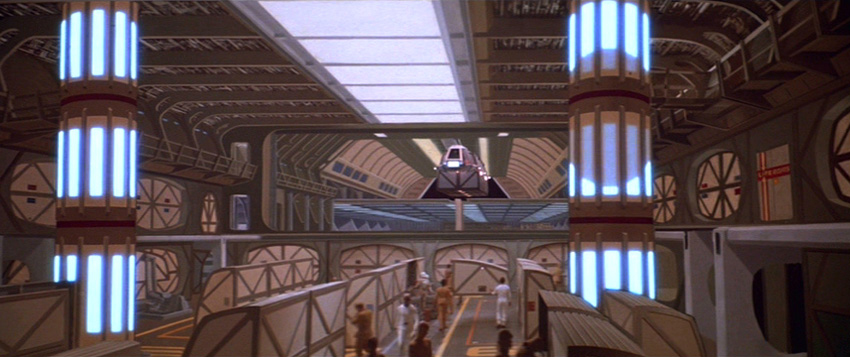
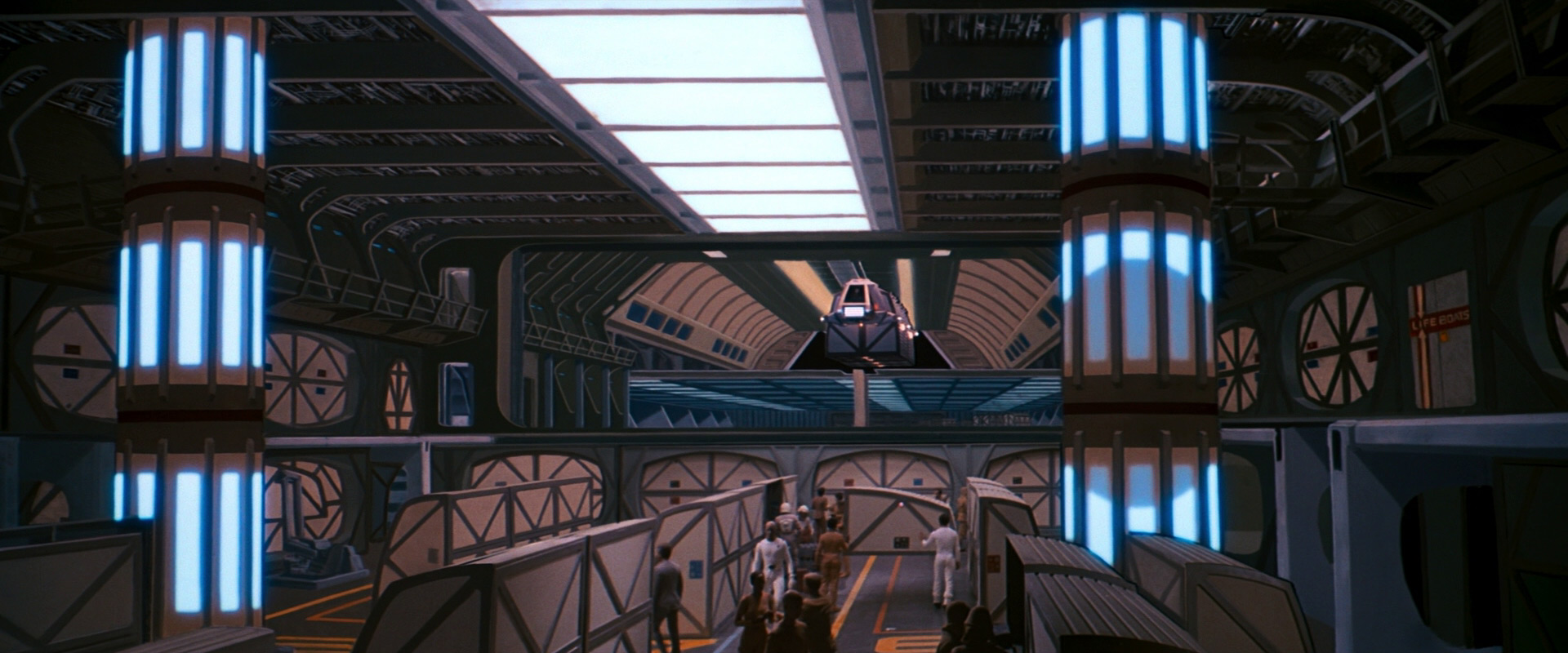
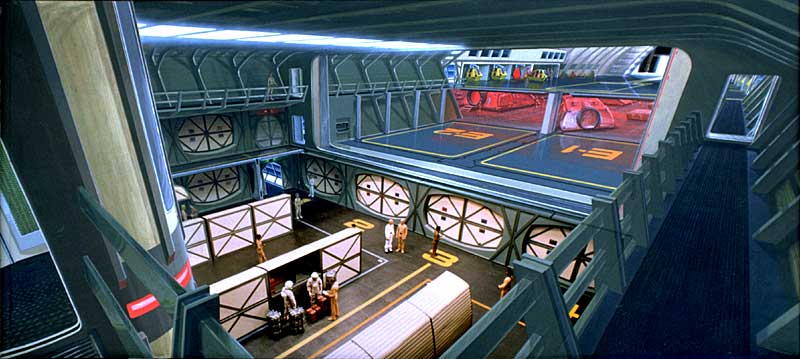
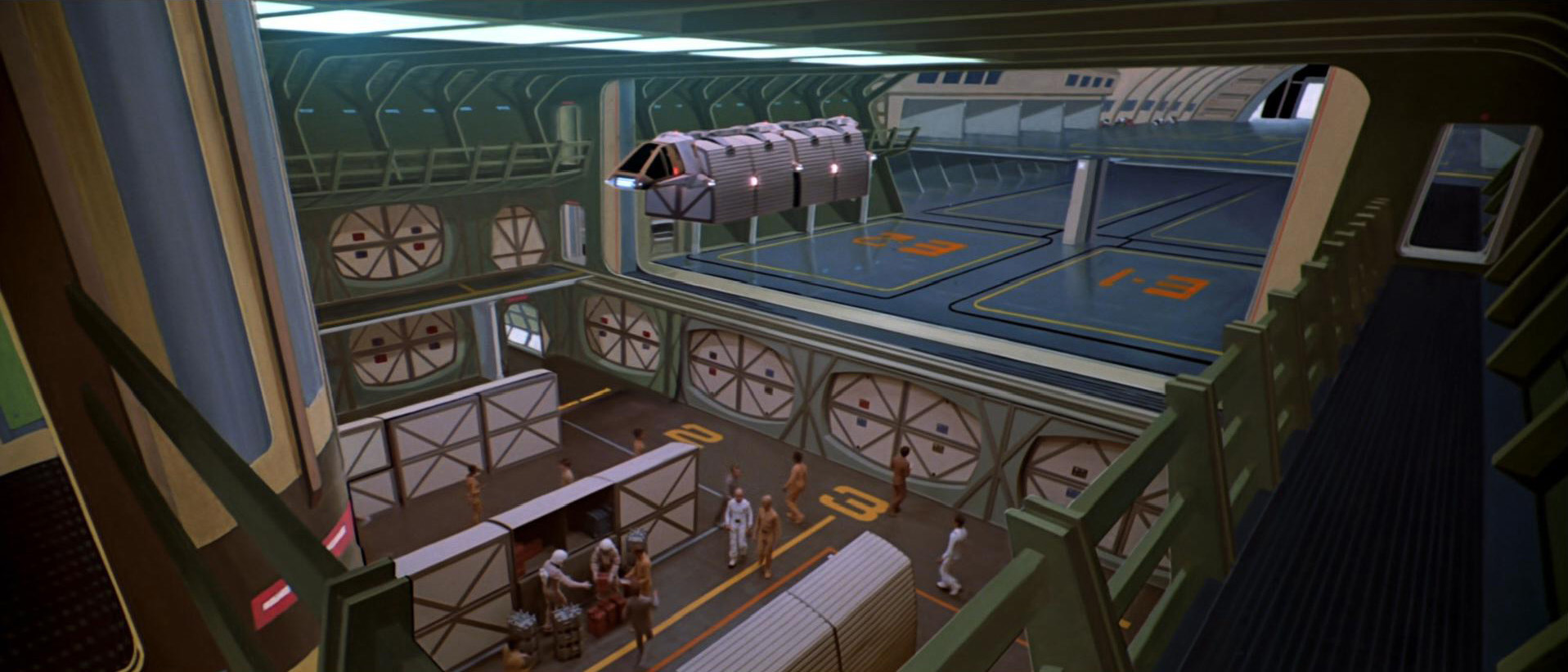
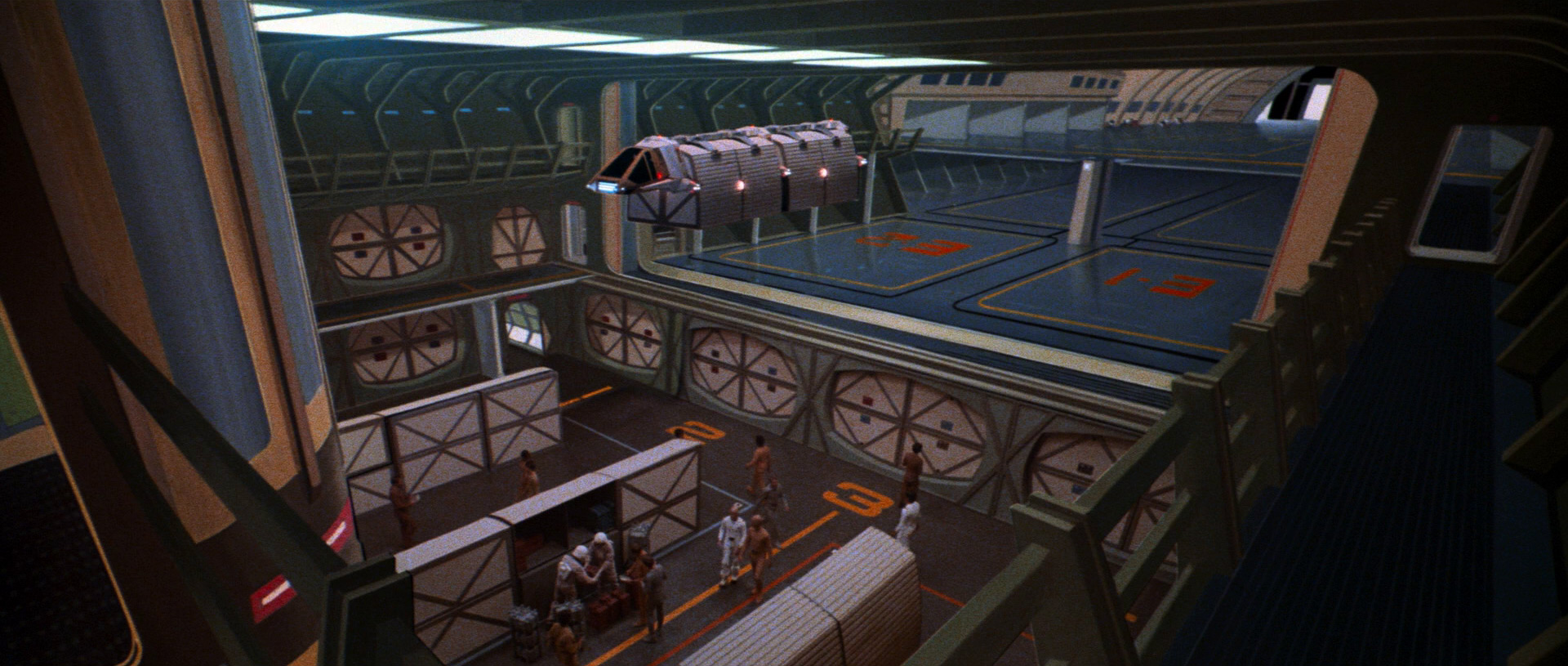
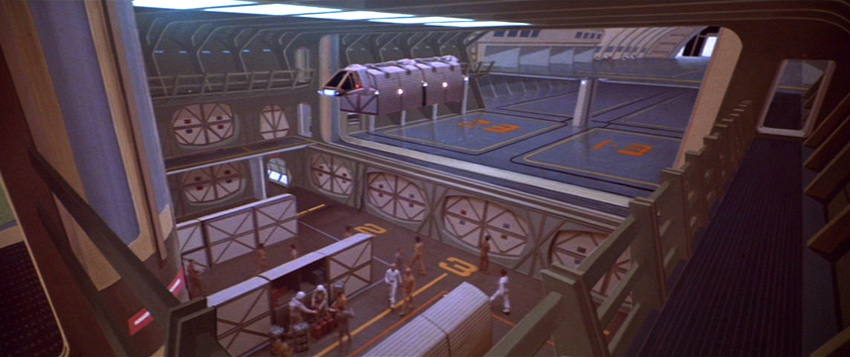
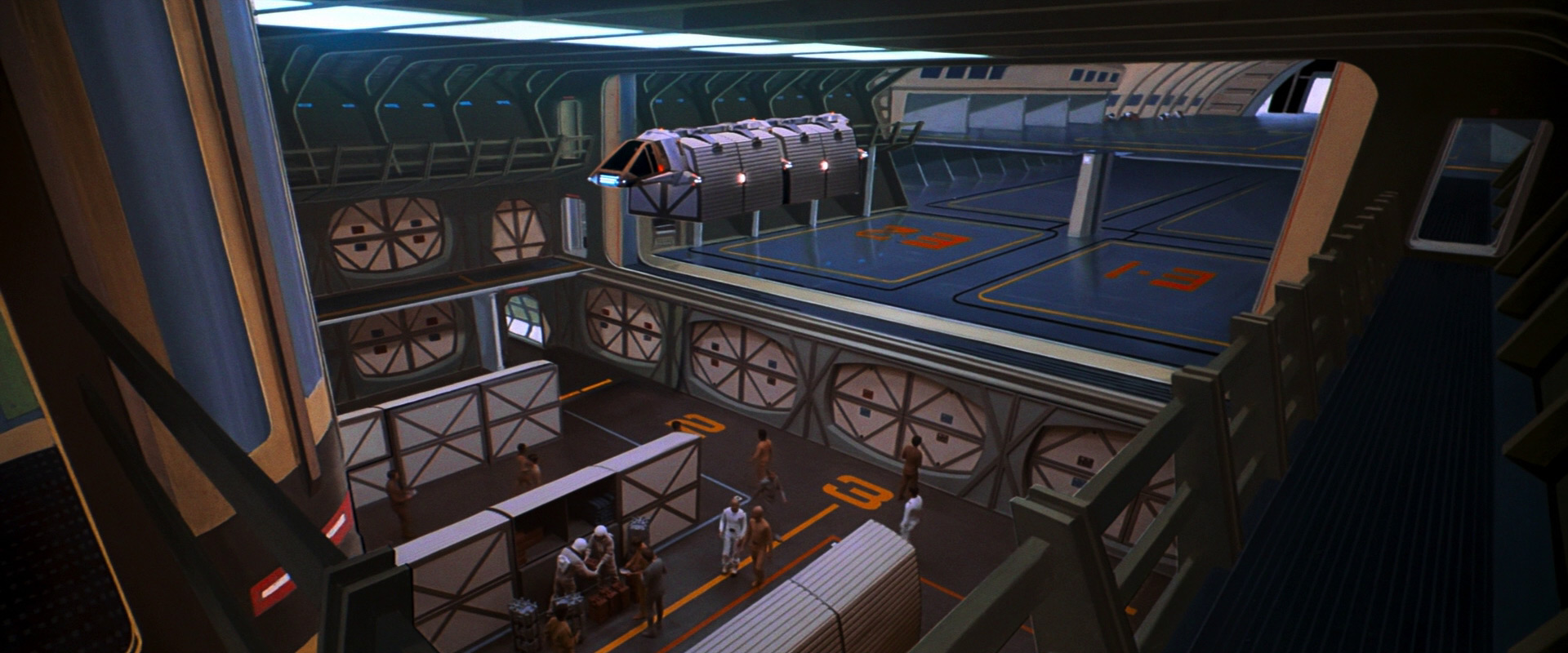
From a lower angle, one can see the secondary roll-away decks protruding somewhat from the sides of the bay. “In their current retracted position, they serve as a walkway at that level,” according to Probert.
The idea here was that, once the main deck was filled with freestanding pods, the second deck could slide together, doubling the available deck space. Not an ideal solution, but one that worked with the plate footage that had already been shot.
Building the set
The set was built under Michelson’s supervision by recycling parts of an older set that was built for Star Trek: Phase II.
Michelson told Star Trek: The Magazine in 2001 that an earlier version of the script had demanded an office for a Japanese admiral. (Kirk only mentions Admiral Nogura in dialogue in the film.)
The guy who was on before me, Joe Jennings, was a very good art director. He designed a place for the admiral. I don’t know exactly what he was going to do with them, but he’d built these section they’d ended up storing. I can’t stand to waste, so I used them in the cargo hold.

9 comments
Submit comments by email.